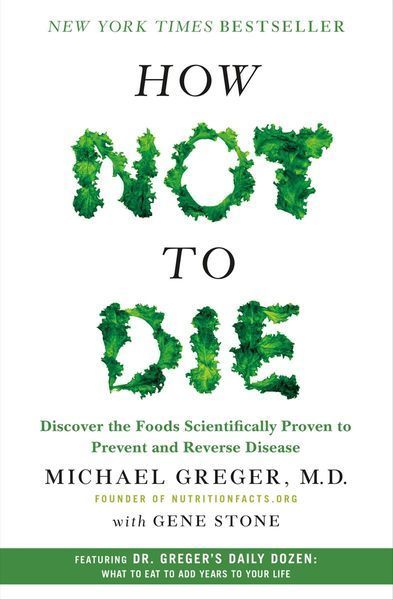
How Not to Die Discover the Foods Scientifically Proven to Prevent and Reverse Disease
From the physician behind the wildly popular website NutritionFacts.org, How Not to Die reveals the groundbreaking scientific evidence behind the only diet that can prevent and reverse many of the causes of disease-related death. The vast majority of premature deaths can be prevented through simple changes in diet and lifestyle. In How Not to Die, Dr. Michael Greger, the internationally-renowned nutrition expert, physician, and founder of NutritionFacts.org, examines the fifteen top causes of premature death in America — heart disease, various cancers, diabetes, Parkinson's, high blood pressure, and more — and explains how nutritional and lifestyle interventions can sometimes trump prescription pills and other pharmaceutical and surgical approaches, freeing us to live healthier lives. The simple truth is that most doctors are good at treating acute illnesses but bad at preventing chronic disease. The fifteen leading causes of death claim the lives of 1.6 million Americans annually. This doesn't have to be the case. By following Dr. Greger's advice, all of it backed up by strong scientific evidence, you will learn which foods to eat and which lifestyle changes to make to live longer. History of prostate cancer in your family? Put down that glass of milk and add flaxseed to your diet whenever you can. Have high blood pressure? Hibiscus tea can work better than a leading hypertensive drug-and without the side effects. Fighting off liver disease? Drinking coffee can reduce liver inflammation. Battling breast cancer? Consuming soy is associated with prolonged survival. Worried about heart disease (the number 1 killer in the United States)? Switch to a whole-food, plant-based diet, which has been repeatedly shown not just to prevent the disease but often stop it in its tracks. In addition to showing what to eat to help treat the top fifteen causes of death, How Not to Die includes Dr. Greger's Daily Dozen — a checklist of the twelve foods we should consume every day. Full of practical, actionable advice and surprising, cutting edge nutritional science, these doctor's orders are just what we need to live longer, healthier lives.
Reviews
Amena Elkayal@amena_elkayal
matej yangwao@yangwao
Olga V@berrybell
Sarah Morris O’Keefe@sarahmorrisokeefe
Izza@m0thermayi
Carol Bailey@cab
McKlayne Marshall@mcklayne
Thea MacDonald@tmac
Flore Detry@flore
Luca Conti@lucaconti
Lara @lara_daniela
Kevin Wammer@cliophate
Gelaine Trinidad@gelaine
Erin G.@toughcakes
William Buller@tuttifruttikid
Jana@janabananaaa
Heiki Riesenkampf@hrk
Pierke Bosschieter@pierke
Barbara@brubru
HannahNergaard@handlebar
Hayley Sarra@jellofish580
Swarnim Walavalkar@swarnim
Keven Wang@kevenwang
Ben Roberts@benjammin
Highlights
Sam Skurka@last_heir_83
Page 353
Sam Skurka@last_heir_83
Page 246
Sam Skurka@last_heir_83
Page 236
Sam Skurka@last_heir_83
Sam Skurka@last_heir_83
Page 211
Sam Skurka@last_heir_83
Page 203
Sam Skurka@last_heir_83
Page 130
Sam Skurka@last_heir_83
Page 123
Sam Skurka@last_heir_83
Sam Skurka@last_heir_83
Sam Skurka@last_heir_83
Page 91
Sam Skurka@last_heir_83